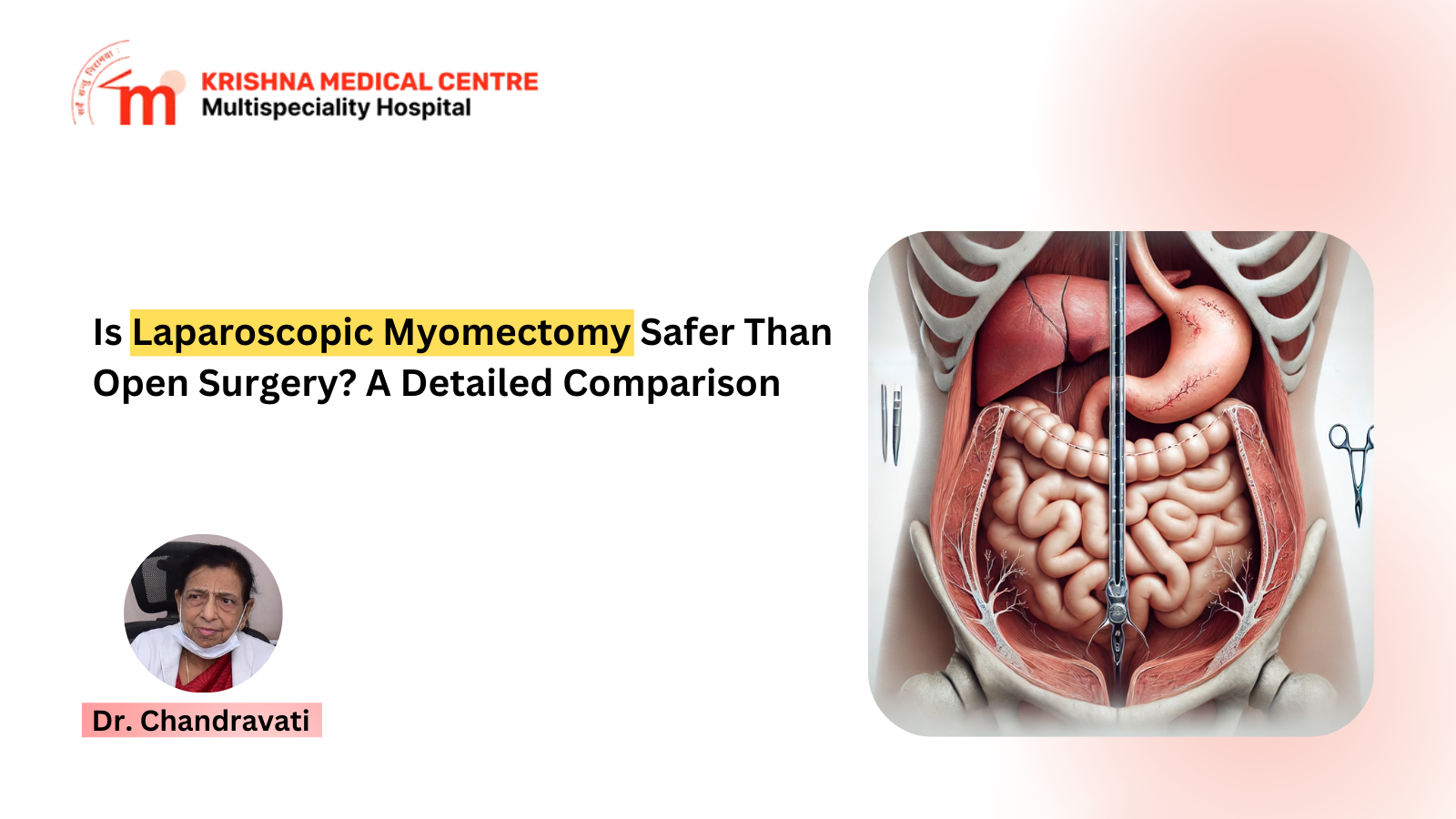

Beware of frauds: Online appointments are available only after confirmation with the hospital for any of our consultant doctors.


Fibroids are a common concern for many women, often causing discomfort and health complications. In fact, a study says that around 70% of women will develop fibroids during their reproductive years. When surgery is necessary, myomectomy offers a way to remove fibroids while preserving fertility. However, with advancements in surgical techniques, the decision between laparoscopic surgery for myomectomy and traditional open surgery can be overwhelming.
Let's compare these two procedures head-to-head, focusing on safety, recovery, and outcomes to help you decide the best path forward.
A myomectomy is a specialised surgical procedure designed to remove uterine fibroids and noncancerous growths that can disrupt your quality of life. Unlike a hysterectomy, which removes the entire uterus, a myomectomy preserves the uterus, making it an ideal option for women who want to maintain their fertility.
Many women opt for this procedure when fibroids cause symptoms like heavy menstrual bleeding, persistent pelvic pain, bloating, or pressure on the bladder or bowel. By targeting and removing only the fibroids, a myomectomy offers relief from discomfort while keeping future pregnancy possibilities open. For women seeking to manage their symptoms without sacrificing reproductive health, this surgery provides a vital balance between treatment and preservation.
Laparoscopic myomectomy, also called minimally invasive myomectomy, is a surgical technique that removes uterine fibroids through small incisions in the abdomen. Surgeons use a laparoscope, a thin tube with a camera, to view the uterus and guide specialised instruments to remove the fibroids.
Compared to open surgery, this method results in:
Laparoscopic myomectomy is especially suitable for women with smaller fibroids who prefer a faster and less invasive recovery.
Open myomectomy, or abdominal myomectomy, is a conventional surgical method that requires a larger abdominal incision to remove fibroids. This method is typically recommended for women with larger or numerous fibroids that may not be accessible through minimally invasive techniques.
Key characteristics of open myomectomy include:
While open surgery remains a viable option, it is generally reserved for more complex cases where laparoscopic surgery is not possible.
When comparing the safety of laparoscopic vs. open myomectomy, laparoscopic surgery is generally considered the safer option for many women. Here’s why:
However, open myomectomy is sometimes necessary for large fibroids, complex cases, or when the fibroids are deeply embedded. In these cases, the surgeon may opt for open surgery to ensure complete removal of the fibroids.
Laparoscopic myomectomy offers a much faster and more comfortable recovery experience compared to open surgery. Here's how they differ:
This shorter recovery time is one of the reasons many women prefer laparoscopic fibroid removal when eligible.
The decision between laparoscopic and open myomectomy depends on several factors, including:
Ultimately, the best option is your unique situation and should be discussed with your healthcare provider.
Laparoscopic myomectomy is generally considered safer and offers several benefits, including faster recovery and fewer complications, compared to open myomectomy. Various factors, including the fibroids' size, location, and overall health, determine the choice between laparoscopic and open surgery. Consult with your doctor to determine the best surgical approach for your needs.
At Krishna Medical Centre, we provide compassionate support and advanced care for women considering a myomectomy. Connect with our gynaecology team to explore safe, effective treatment options tailored to your needs. Reserve your appointment now!